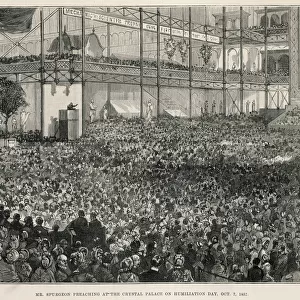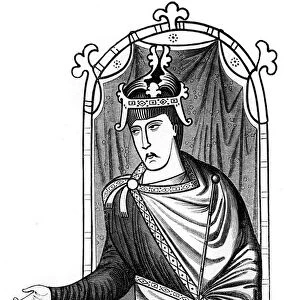Home > Europe > United Kingdom > England > London > Weather
Dr. Merryweathers Tempest Prognosticator
![]()

Wall Art and Photo Gifts from Mary Evans Picture Library
Dr. Merryweathers Tempest Prognosticator
Featured in the Great Exhibition of 1851, Dr. Merryweather of Whitbys Tempest Prognosticator was designed to warn of approaching storms. Described as an ingenious device for the protection of life and property, it houses 12 leeches, disposed each in a transparent glass bottle, arranged in a circle " in order that the leeches might see one another and not endure the afflictions of solitary confinement". Atmospheric pressure agitates the leeches, who rise and move whale bone buttons, sounding the bell and so warning of approaching tempests. See 10423321 for a reconstruction
Mary Evans Picture Library makes available wonderful images created for people to enjoy over the centuries
Media ID 4467503
© Mary Evans Picture Library 2015 - https://copyrighthub.org/s0/hub1/creation/maryevans/MaryEvansPictureID/10423322
Approaching Atmospheric Bone Device Leeches Merry Weather Predicted Pressure Tempest Warn Whale
EDITORS COMMENTS
Dr. Merryweather's Tempest Prognosticator: A Historical Marvel of Weather Prediction This photograph showcases Dr. John Merryweather's Tempest Prognosticator, an ingenious device that graced the Great Exhibition of 1851 in London. Dr. Merryweather, a Whitby native, designed this remarkable instrument to offer a vital early warning system for approaching storms, safeguarding life and property. The Tempest Prognosticator housed twelve leeches, each ensconced in a transparent glass bottle, arranged in a circle. The leeches were not left to languish in isolation, as Dr. Merryweather believed they "might see one another and not endure the afflictions of solitary confinement." Instead, they were provided with a unique perspective, enabling them to observe their fellow leeches and respond collectively to atmospheric changes. The Tempest Prognosticator's functioning was based on the principle of atmospheric pressure. As pressure fluctuated, the leeches would rise and move whale bone buttons, triggering a bell to sound, alerting those nearby of an impending tempest. This prehistoric weather prediction method, though seemingly unconventional by today's standards, was a testament to the scientific curiosity and ingenuity of the Victorian era. This photograph offers a glimpse into the past, showcasing a historical device that, despite its quirks, played a significant role in the history of weather prediction. The Tempest Prognosticator, with its unusual combination of leeches and whale bones, remains an intriguing reminder of the early attempts to harness the power of nature and forecast the unpredictable weather.
MADE IN THE USA
Safe Shipping with 30 Day Money Back Guarantee
FREE PERSONALISATION*
We are proud to offer a range of customisation features including Personalised Captions, Color Filters and Picture Zoom Tools
SECURE PAYMENTS
We happily accept a wide range of payment options so you can pay for the things you need in the way that is most convenient for you
* Options may vary by product and licensing agreement. Zoomed Pictures can be adjusted in the Cart.






